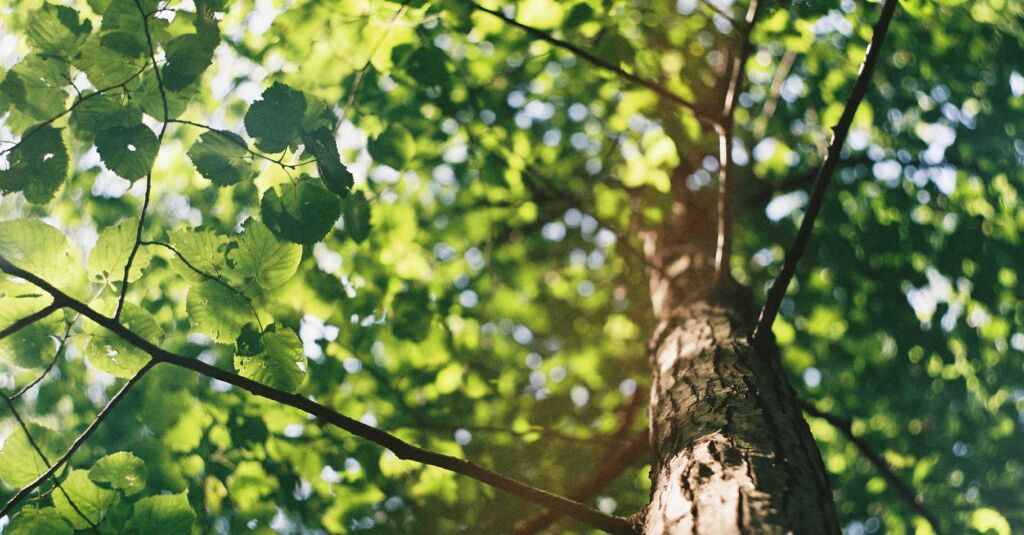HOLMRIS B8 now offers you to offset the CO2 emission from the production of a work station by buying trees. Find the most asked questions and answers regarding this green initiative in the FAQ below.
You can read about what it means to buy a tree through HOLMRIS B8, what it costs, where the trees will be planted, what types of threes we plant, and much more.
What does a tree cost in the HOLMRIS B8 recreational forest?
A tree costs 22 DKK incl. VAT. This means that if you are VAT registered, the tree costs 17,60 DKK, while the rest is VAT and therefore deductible. 5 trees cost 88 DKK and comprise your total purchase.
Where will the HOLMRIS B8 recreational forest be planted?
The forest will be planted in outside of Aarhus, Denmark. Aarhus municipality is very interested in trees, because the company Aarhus Vand (Aarhus Water) wants more trees planted to help secure the ground water. So far, the municipality has announced that 800 hectares of land are ready for planting. Being close to Aarhus is also relevant because it is central for many of HOLMRIS B8’s customers as well as HOLMRIS B8’s many departments.
Most of the recreational forests will be planted over ground water aquifers and it is important that the land is publically owned to ensure that everyone has access to the forest. When the forest is ready to be planted, it will be celebrated with a party and anyone who shows up will get the chance to plant a tree in the forest.
How many trees will be planted in the HOLMRIS B8 recreational forest?
Initially, we are aiming for 25,000 trees, but if there is an interest to continue, we will keep planting, perhaps in a new location. HOLMRIS B8 will plant 2,500 trees to start with.
What is a recreational forest?
A recreational forest has the primary purpose of protecting the ground water as well as providing Danes with new outdoor and nature experiences close to bigger cities.
The Danish Nature Agency works to ensure that forests are continuously planted all over Denmark and for this purpose, they have established a collaboration with the Growing Trees Network Foundation that handles donations from both private people and organizations. The donations increase the resources that the state has already allocated to creating new state forests. This means that even more forests can be planted in the future. The first recreational forest that the Growing Trees Network Foundation planted was in May 2013 at Beder/Malling, Denmark.
Who will plant the trees?
The trees in the recreational forest will be planted by the Growing Trees Network Foundation, which is an independent institution whose objective is to plant as many trees as possible in Denmark by collaborating with landowners and through donations from citizens and companies. The Growing Trees Network Foundation does not plant the trees themselves but ensure that it happens by collaborating with the municipality and the Danish Nature Agency. The organization has previously done projects with Aarhus Municipality, Odense Municipality, Randers Municipality, Høje Taastrup Municipality, and Favrskov Municipality.
When will the HOLMRIS B8 recreational forest be planted?
The first 25,000 trees will be planted during Fall 2019 and then during the two “planting windows” in Spring or Fall. Spring and Fall are the two times a year that are optimal for planting due to the right growth conditions for plants to start a new life in new soil.
What types of trees will be planted in the HOLMRIS B8 recreational forest?
The tree sorts will vary and will be based on the preferences of the municipality based on soil conditions of the given land. Common tree sorts include birch, oak, basswood, larch, and other trees you would typically find in Denmark. There will also be more useful trees such as apple trees and cherry trees. The diversity of trees is important, especially to ensure the survival of animal species.
Who will be responsible for the maintenance of the forest?
Through standard contracts with municipalities and the Danish Nature Agency, the collaboration with the Growing Trees Network Foundation ensures that the grounds are prepped, the trees are taken of, and the needed pathways and parking lots are established. The collaboration also means that trees that die within 3 years are replaced by new viable trees. Also, the recreational forest will be denoted a forest reserve, which means that the forest cannot be cut down.
Who can purchase the trees?
Anyone can purchase trees in the HOLMRIS B8 forest.
Not everyone can afford a Tesla or solar cells on their roof, but most people can afford to plant 5 trees for 56 DKK, which means that everyone can contribute to a better environment in a feasible way.
How do you calculate the CO2 emission for every work station in an office?
Materials, weight, transportation type, and energy expenditure for production etc. naturally influences how much CO2 is emitted during production of our furniture. All things being equal, a new workstation in an office space (including a desk, chair, and storage unit) for one employee costs around 150-200 kg of CO2 to produce.
A conservative calculation from tree professor Palle Madsen led us to the following:
Birch on decent soil (not necessarily the best) with certain growth binds approx. 1,300 ton CO2 for each hectare over 100 years. Over 30 years, this accumulates to 390 tons/ha. When we plant 4,000 trees per hectare, it turns into 97,5 kg. per tree a year for 30 years.
This means that 1,5 birch trees on average bind 150 kg CO2 in the forest.
This number can be a lot higher especially for coniferous trees and if you start with poplars combined with birch trees, you can quickly (in 4-5 years) reach a full production (20-30 ton CO2 / hectare a year) – this also betters the 30-year calculation, because only 1,500-2,000 poplars are planted per hectare which means that not as many birch trees need to be planted.
This calculation does not consider the substitution effect – the effect of using the trees in production to save concrete, steel, aluminum, and other climate damaging materials. This effect is important because it can actually be greater than the effect of the forest growing – especially with coniferous trees where a relatively large portion of the tree can be used for building materials.
How much CO2 is further bound depends on the tree sort, soil, and the type of forestry. The better the soil conditions, the greater the amount of carbon is stored in the trees.
However, 1,5 trees on average bind 150 kg CO2 in the forest.
This is calculated to a factor that means that 5 trees as a minimum corresponds to a workstation in terms of CO2 strain.
How long will the HOLMRIS B8 recreational forest stand?
Forever. In case changes occur due to the development of Denmark’s infrastructure that require the forest be taken down, the municipalities and state are obligated to plant a new recreational forest that is twice the size as compensation by virtue of the forest reserve agreement and the forest law. A forest typically stands for 500 years.









